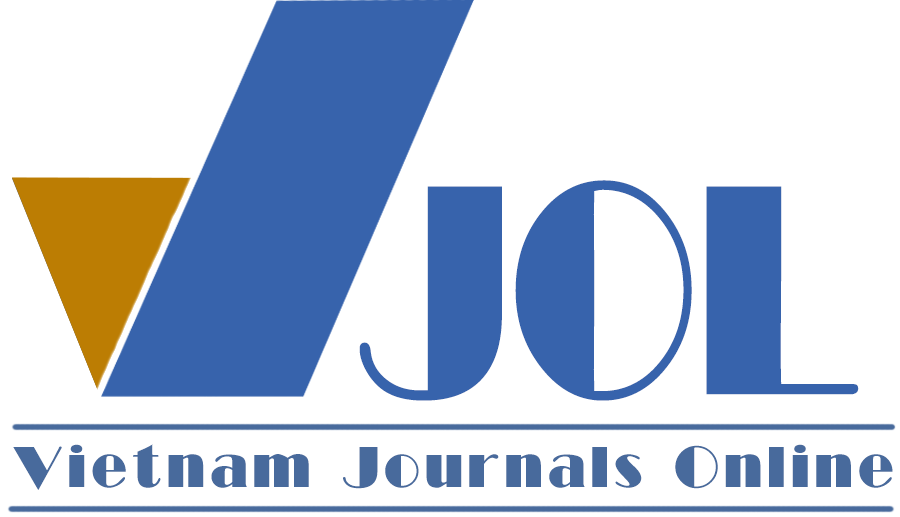Sustainable livelihoods of ethnic minority households in Hoang Su Phi District, Ha Giang Province
Authors
DOI: https://doi.org/10.57110/jebvn.v3i1.164Keywords:
Sustainable livelihood, Hoang Su Phi, households, livelihood resources, ethnic minoritiesReferences
Fahad, S., Shah, S. H. H., Raza, M. H., & Mubeen, M. (2022). Analyzing the status of multidimensional poverty of rural households by using sustainable livelihood framework: Policy implications for economic growth. Environmental Science and Pollution Research, 29(1), 1–14. https://doi.org/10.1007/s11356-022-23143-0
Ha Giang Statistical Office (2021). Statistical Yearbook 2021. Ha Giang.
Obong, L. B., Eni, D. D., & Bisong, F. E. (2013). Sustainable livelihood in the Cross River National Park, Oban Division, Nigeria. International Journal of Business and Social Science, 4(16), 219–231. https://ijbssnet.com/journals/Vol_4_No_16_December_2013/20.pdf
Wamalwa, F., Mutunga, D. N., & Kamau, J. (2021). The influence of household assets on livelihood choices in Kieni Sub Counties, Kenya. International Journal of Social Science and Humanities Research, 6(1), 20–31. https://www.researchpublish.com/papers/the-influence-of-household-assets-on-livelihood-choices-in-kieni-sub-counties-kenya
Nadhavadekar, U. P., Kale, N. M., & Salame, S. P. (2021). Livelihood sustainability of small and marginal farmers in Western Vidarbha. The Pharma Innovation Journal, 10(2), 141–148. https://www.thepharmajournal.com/archives/2021/vol10issue2S/PartC/S-10-1-27-204.pdf
Hahn, M. B., Riederer, A. M., & Foster, S. O. (2009). The livelihood vulnerability index: A pragmatic approach to assessing risks from climate variability and change – A case study in Mozambique. Global Environmental Change, 19(1), 74–88. https://doi.org/10.1016/j.gloenvcha.2008.11.002
Li, H., Nijkamp, P., Xie, X., & Liu, J. (2020). Index for rural revitalization assessment: A modelling study on smart tourism specialization in China. Sustainability, 12(8), 3148. https://doi.org/10.3390/su12083148
Fatemeh, N., & Niloofar, A. (2021). Sustainable livelihood framework-based assessment of drought resilience patterns of rural households of Bakhtegan Basin, Iran. Ecological Indicators, 128, 107817. https://doi.org/10.1016/j.ecolind.2021.107817
Department for International Development (DFID). (1999). Sustainable livelihood guidance sheets. https://www.livelihoodscentre.org/documents/114097690/114438878/Sustainable+livelihoods+guidance+sheets.pdf/594e5ea6-99a9-2a4e-f288-cbb4ae4bea8b?t=1569512091877
Yamane, T. (1973). Statistics: An Introductory Analysis. John Weather Hill, Inc.
Kamaruddin, R., & Samsudin, S. (2014). The sustainable livelihoods index: A tool to assess the ability and preparedness of the rural poor in receiving entrepreneurial project. Journal of Social Economics Research, 1(6), 108–117. https://archive.conscientiabeam.com/index.php/35/article/view/1299
Wu, X., Zhang, X., & Liu, Y. (2019). Research on the intergenerational transmission of poverty in rural China based on sustainable livelihood analysis framework: A case study of six poverty-stricken counties. Sustainability, 11(8), 2341. https://doi.org/10.3390/su11082341
Xie, W., Li, Y., & Zhang, L. (2019). Land use transition and its influencing factors in poverty-stricken mountainous areas of Sangzhi County, China. Sustainability, 11(18), 4915. https://doi.org/10.3390/su11184915
Downloads
Additional Files
Published
Abstract View
PDF Downloaded
How to Cite
Issue
Section
License
Copyright (c) 2023 Nguyễn Thị Lan Hương

This work is licensed under a Creative Commons Attribution-NonCommercial 4.0 International License.
by VNU Journal of Economics and Business






